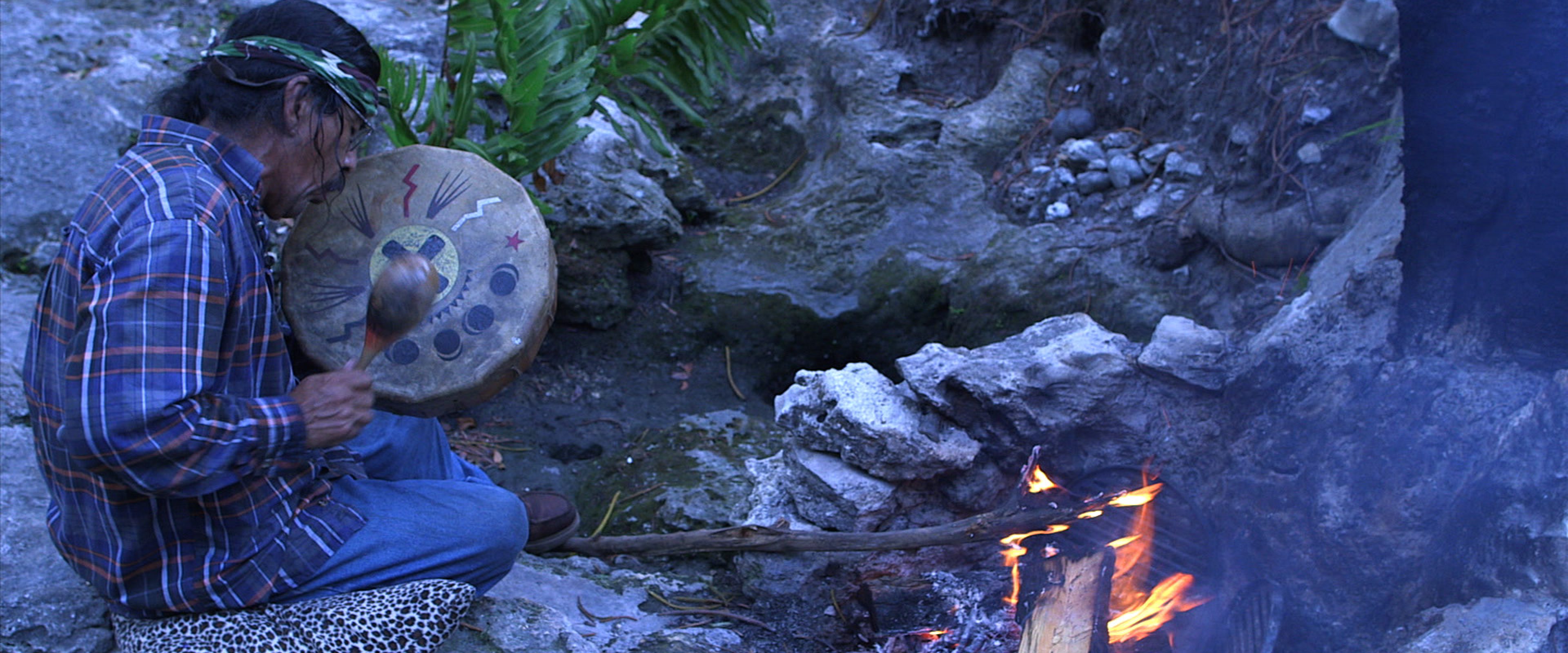When the Land Speaks is organized by the Eli and Edythe Broad Art Museum at Michigan State University and curated by Carla Acevedo-Yates and Steven L. Bridges, Associate Curators. Support for this exhibition is provided by the Alan and Rebecca Ross endowed exhibitions fund.
About the Exhibition
Dara Friedman’s video Ishmael and the Well of Ancient Mysteries centers on Ishmael “Golden Eagle” Bermudez, who has spent more than fifty years excavating an ancient spring in the backyard of his childhood home in Miami. Prompted by his sixth-grade teacher, Bermudez set out to find a spring connected to the Biscayne Aquifer—a shallow layer of highly permeable limestone underlying southeastern Florida. He did not find the well until seven years later, but his discovery along the way of arrowheads and other artifacts led him to believe that his backyard was a “spiritual vortex,” a sacred place, of the Tequesta tribe of Native Americans. Then in 1998, decades after he began digging, a loop of twenty-four holes carved into the limestone bedrock, attributed to the Tequesta and dating as far back as the first century, was discovered six blocks away, thus establishing the entire neighborhood as an archaeological conservation area. Bermudez’s home, a small cottage nestled amid pine and mango trees in what is now Miami’s financial center, has since become a gathering place for preservationists and conservationists. Bermudez continues to excavate the Well of Ancient Mysteries, and promotes the protection and conservation of our precious water resources.
Dara Friedman (b. 1978, Bad Kreuznach, Germany) lives and works in Miami.
When the Land Speaks
This program presents the work of artists who explore the land as a space of conflict, which speaks through a changing, often fractured landscape. Addressing current issues such as resource extraction, sustainability, land rights, and displacement and dispossession, the works in this video series approach language as a form that does not limit itself to verbal communication. Instead, enunciation takes place in and through the territory: in the sounds and forms that water takes, in the rumbles and cracks of the earth, and in the ancestral rituals and practices derived from the landscape. In many ways, land and language have always been interconnected, each helping to define the other. But in our present day, there is a growing disconnect between much of human society and any sense of rootedness or care for the land that supports us. Confronting these realities, the artists in this series draw attention to the power of the landscape to express itself and communicate with us, and reflect on how our eroding connection to the land may also represent a fading understanding of ourselves.
